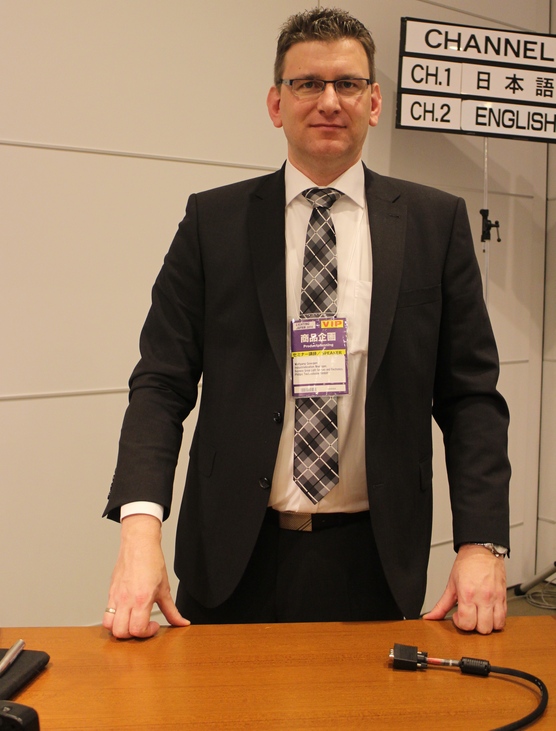At Lighting Japan 2014 in Tokyo Big Sight, OLED industry insiders of have noted that there is still a long way to go before the technology can become mature enough to compete with LEDs.
From a designer’s perspective OLED is still a very attractive technology for making aesthetic luminaires. OLEDs have the features of being light, flexible, transparent, and low temperatures, pointed out Synqroa Vice President of Development Mitsuhiro Koyama and Vice President of Marketing Jun Shimada. OLED also has a high lifetime of 10,000 hours However, high costs are still OLEDs Achilles heel, and the lighting source is still behind in energy efficiency compared to LED.
 |
|
Wolfgang Gorgen, Program Manager Strategy, Business Center OLED Lighting, Philips Technologie at Lighting Japan 2014, Tokyo. (LEDinside) |
Speaking on OLED module GL350 Typ2 , Wolfgang Gorgen, Program Manager Strategy, Business Center OLED Lighting, Philips Technologie pointed out the company was able to make significant technical breakthroughs in fields including in lumen flux, color and CRI, but still struggled with bringing efficiency on par with LEDs 50 lm/W. The OLED module currently has a luminous efficiency of 45 lm/W.
The company also continues to struggle with OLED prices too. “Improvements will be needed in organic material and substrate costs, to bring down OLED costs,” said Gorgen. He also pointed OLED packaging is another essential key in lowering costs. Philips is not alone in this issue, other speakers including Acuity Brands Lighting and Synqroa also shared similar observations.
 |
|
Min-hao Liu, Director of OLED Lighting Design Center, Acuity Brands Lighting at Lighting Japan 2014. (LEDinside) |
The reason behind OLEDs high costs is it is not as bright as LEDs. The typical OLED has a lumen range of 200 to 300 lumens. Manufacturers need to add more panels to compensate for its lower luminosity, pointed out Min-hao Liu, Director of OLED Lighting Design Center, Acuity Brands Lighting. Adding OLED panels often drive up the manufacturing costs. Thus Liu noted it is important from an economic point of view of making OLED designs double panels that emit light both ways. This is necessary as it can help cut costs, and reduce the number of panels used, said Liu.
Despite the proposed good solution, Gorgen noted, as long as the market is not developed it remains difficult for manufacturers to scale up production and R&D. For now, it seems there are still several technical roadblocks for OLED to overcome before it becomes a mainstream general lighting application.











